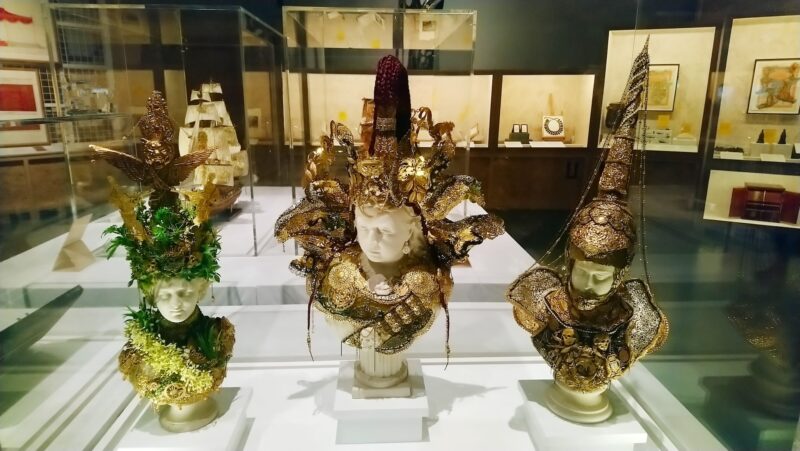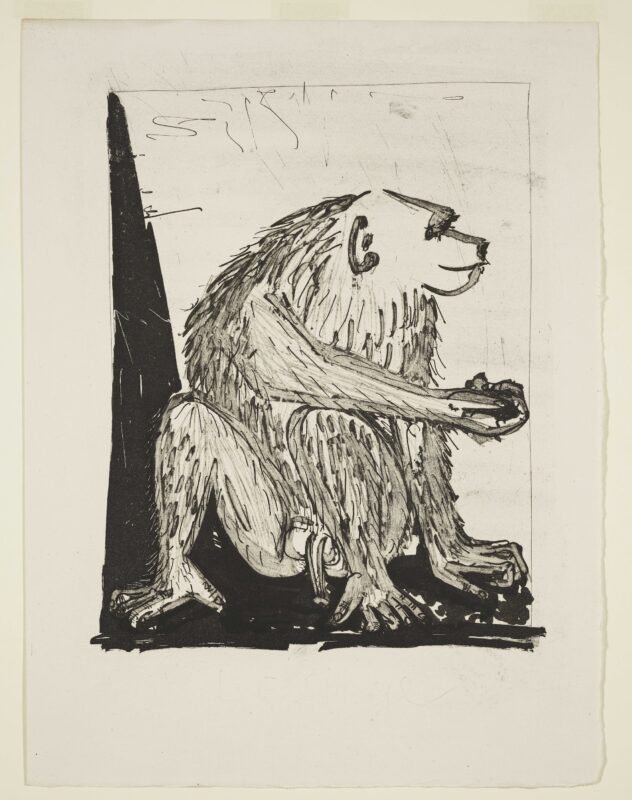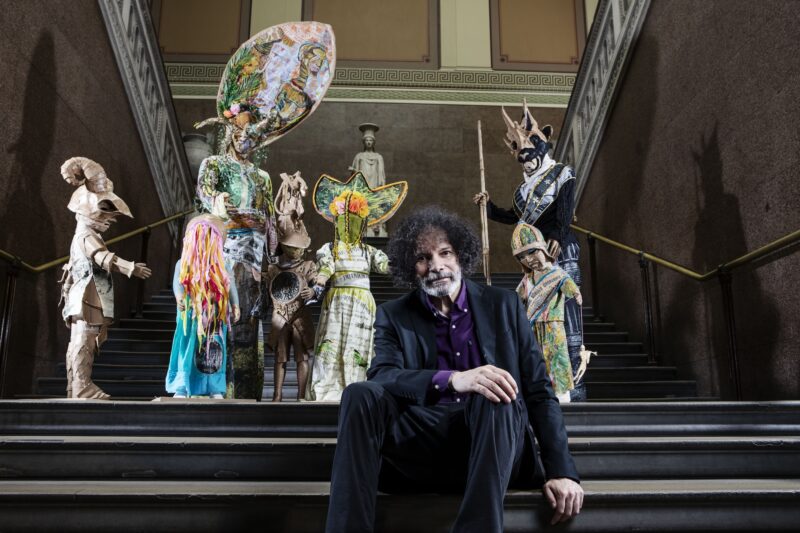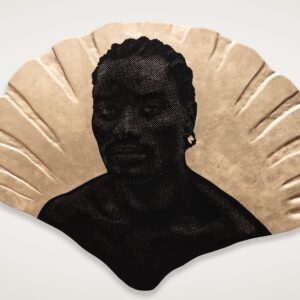Did you know that the British Museum holds one of the world’s largest collections of prints and drawings, a tiny selection of which is exhibited in one and a half rooms on the fourth floor? Their hoard includes 500 works on paper by Picasso, with a small fraction currently on display in the larger one, reached via a golden lift in the Living and Dying section – a fitting route to an exhibition chronicling the modern master’s life in works on paper.
The rather overbearing timeline in the centre of the room distracts from the exquisite artworks that are locked away in glass cabinets along the walls and leaves no doubt as to this being a museum show about the artist, rather than an art exhibition. It also serves as a comprehensive guide to what constitutes an artist’s practice, from processes and techniques to influences, collaborations and sources of inspiration.
While Pablo Picasso’s romantic relationships and their influence on his practice have been well documented and the timeline makes pragmatic reference to the obvious influence of African masks and Polynesian carvings on his practice, this exhibition emphasises the significance of collaborations and names the master printers who shared their expertise throughout the creative periods where the role of technical advisors and studio assistants is often neglected.
Scrolls of microscopic enlargements of Picasso’s mark-making almost steal the show from the prosaic prints of birds they scrutinise. A large board provides an overview of the impressive breadth of printing techniques employed by Picasso, describing the characteristics of aquatint, drypoint, etching and lithography in simple terms. All stages of reduction linocuts are illustrated by the show’s poster image Still Life under the Lamp with proofs of the four individual colour stages displayed alongside the finished masterpiece.
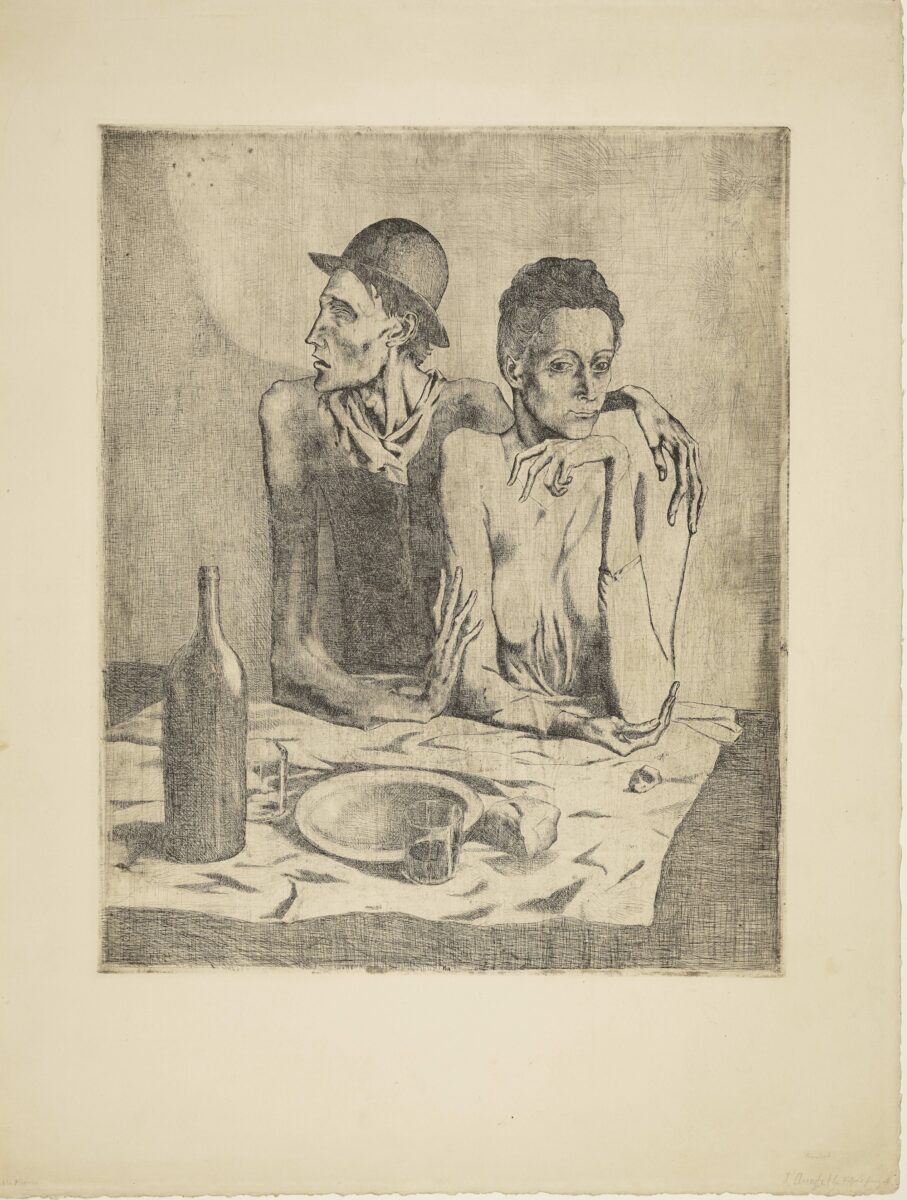
The exhibition opens with an etching Picasso produced on his arrival in Paris. It is considered his first print as a professional artist, albeit a struggling one. This is evident in the subject matter and the recycled printing plate used to create The Frugal Meal, part of the emotionally charged Blue Period that gained him recognition in his early 20s. As his reputation grew, street scenes and life drawings were replaced by studies for large scale paintings – small reproductions of which are displayed alongside the prints.
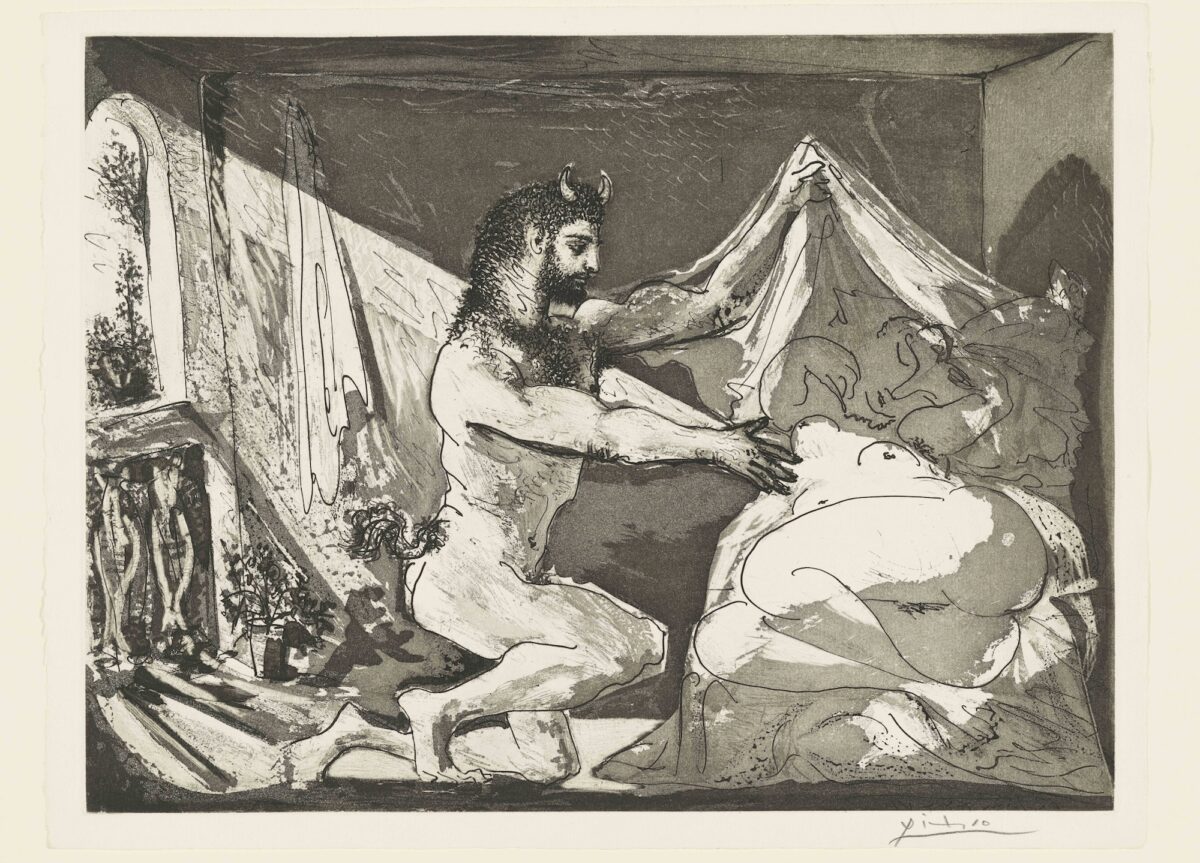
The machismo portrayals of the artist studio make for uncomfortable viewing, especially from a post-#metoo perspective; yet the formal contrast between opulently drawn male figures and the simply outlined submissive females remains seductive. The introduction of mythological beasts further highlights the manifestation of male dominance and it almost comes as a relief when the focus of the middle-aged artist shifts to politics at the height of the Spanish Civil War.
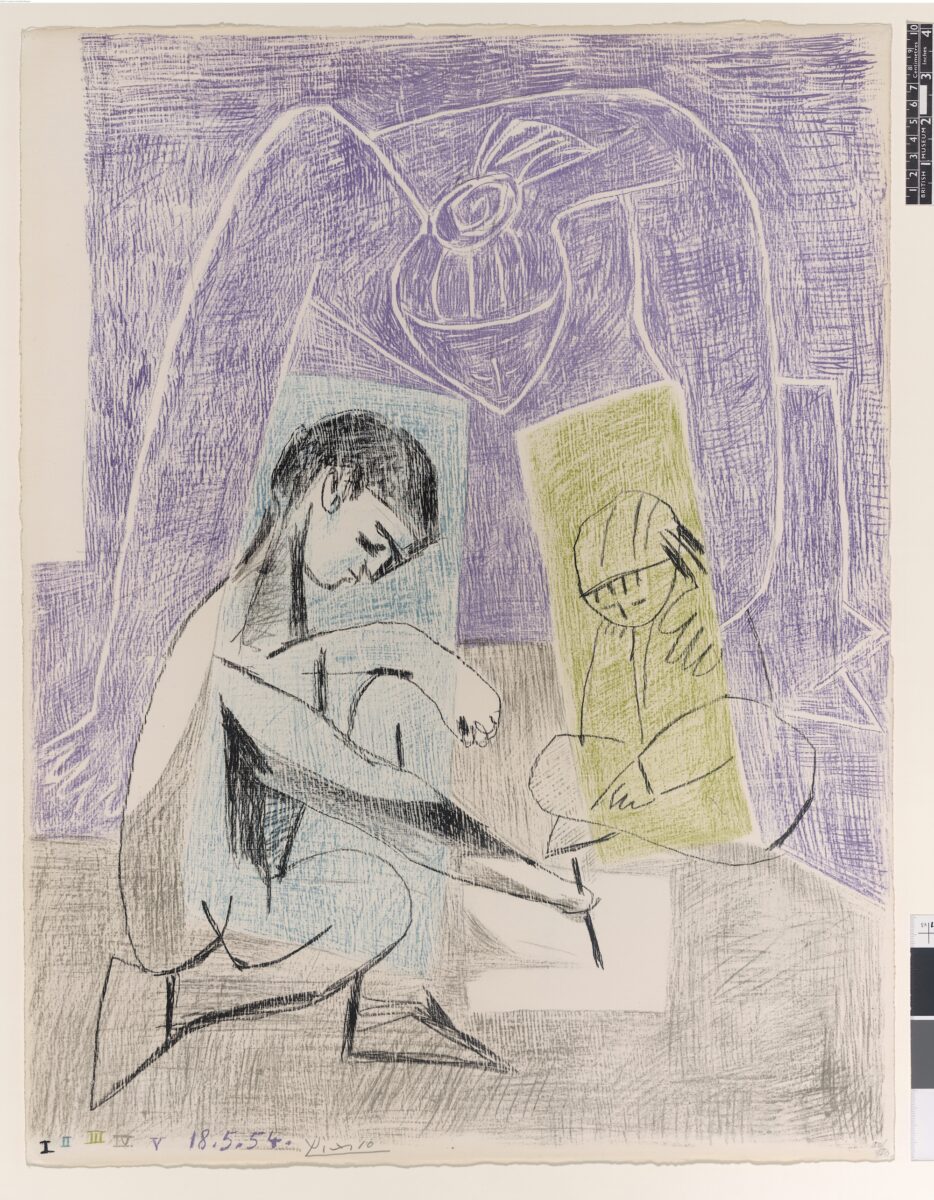
He was in his early 70s when he created The Little Artist. Produced in response to his wife and children leaving him, it is one of the most intimate works in the exhibition. It is presented as an example of the colour crayon transfer lithograph technique, alongside two linocut prints illustrating the dramatically different results achieved with conventional and experimental processes, with less attention given to the subject matter of Two Women Waking Up.
The final section includes a selection of Picasso’s 347 Suite, a retrospective journal made up of etchings, drypoints and aquatints produced in under seven months, aged 86. Picasso kept on producing work until his death, revisiting themes and subjects of his remarkable life and career while continuing to experiment with styles and techniques – proof that lifelong learning and curiosity provide a key to longevity perhaps?
Picasso: Printmaker, 7th November 2024 – 30th March 2025, British Museum
